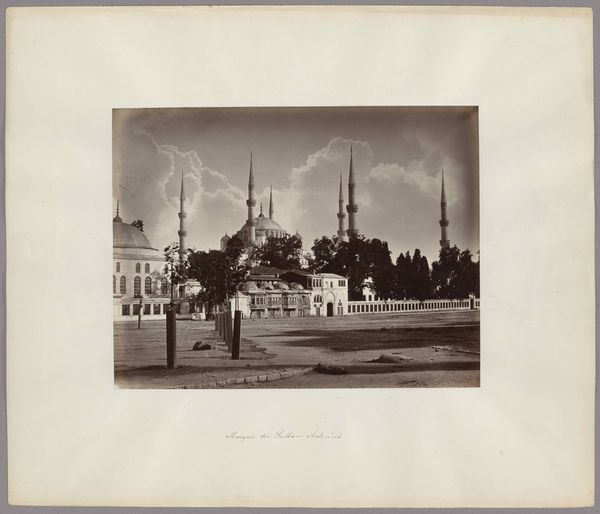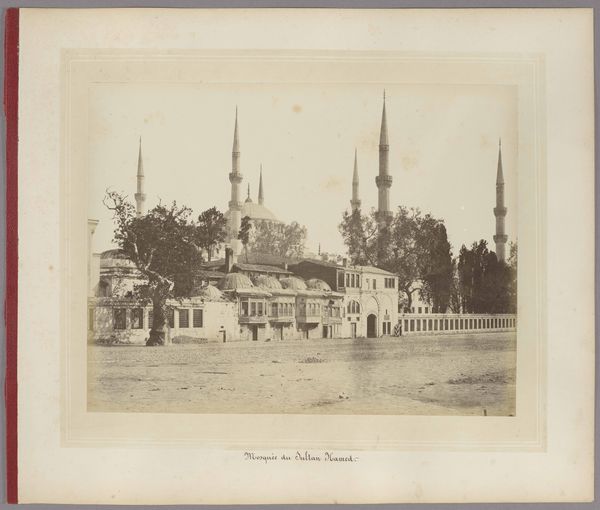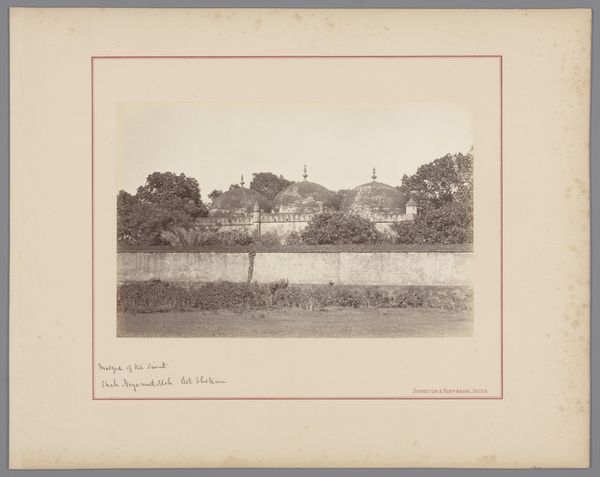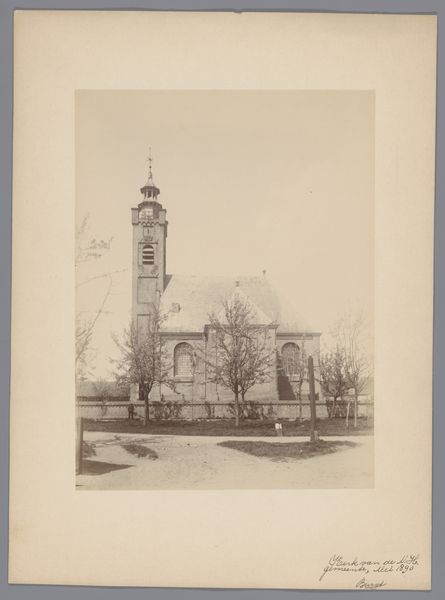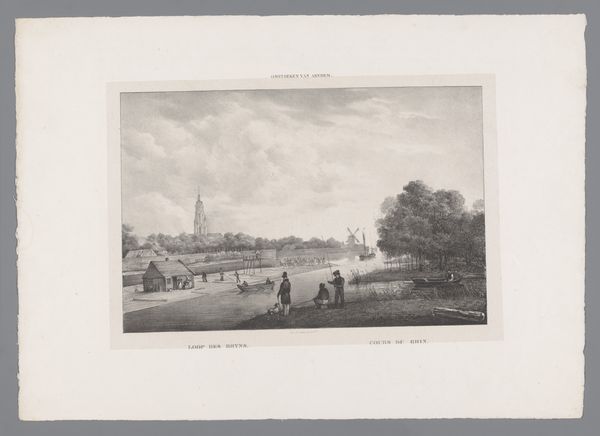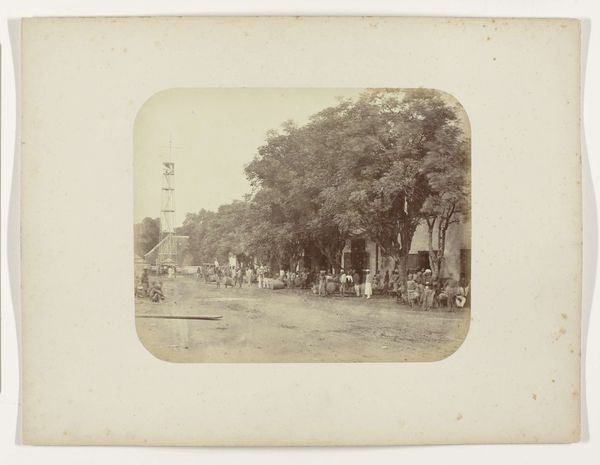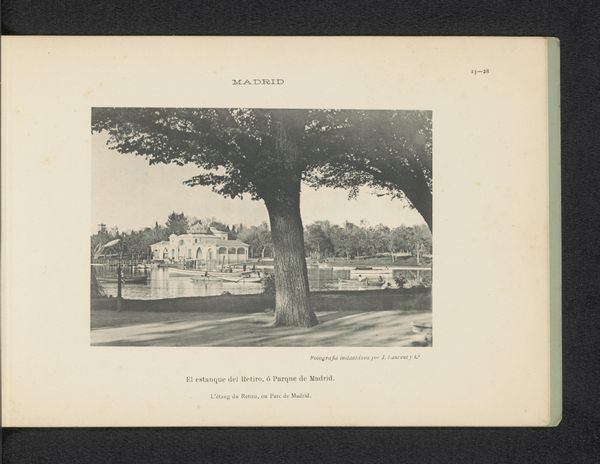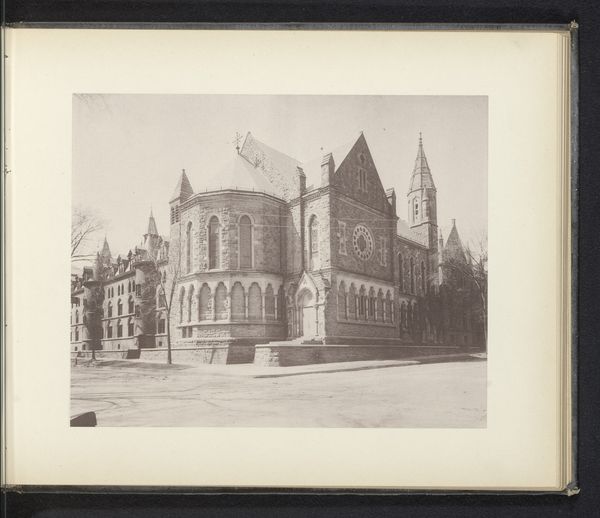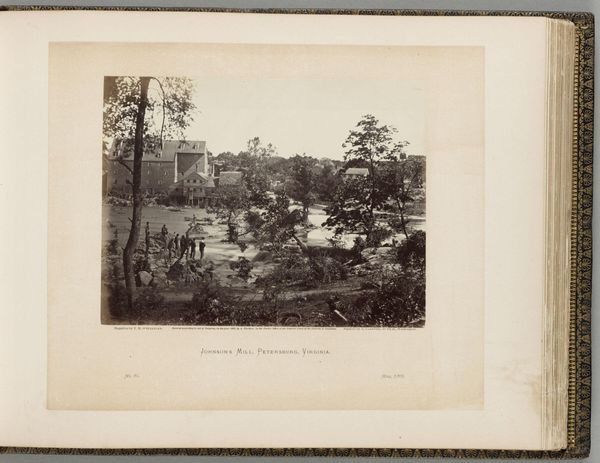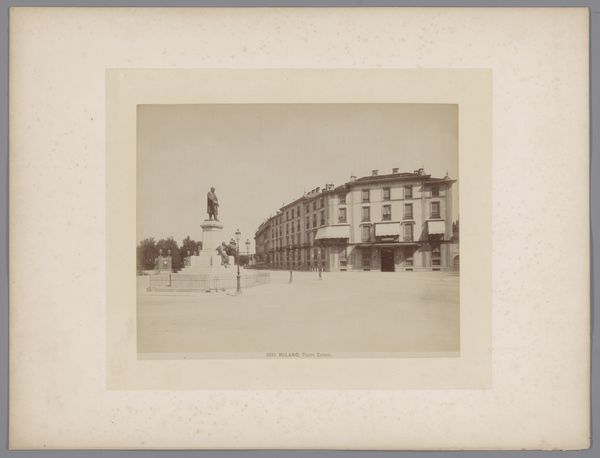
albumen-print, paper, photography, albumen-print, architecture
#
albumen-print
#
portrait
#
tree
#
still-life-photography
#
16_19th-century
#
pale palette
#
landscape
#
paper
#
photography
#
orientalism
#
cityscape
#
albumen-print
#
architecture
Copyright: Public Domain
Curator: Welcome. Before us, we have Pascal Sébah's albumen print, "The Janissary Tree," dating from around 1870 to 1875. It is currently housed at the Städel Museum. Editor: The first thing I notice is the stillness. The tonal range creates a pervasive sense of quietude despite what feels like a fairly open and public space. Curator: Indeed. Structurally, the large tree on the right anchors the composition. Its aged, gnarled branches reach upward and dominate much of the frame. Note the lone figure in the mid-ground for compositional scale. Editor: And that’s where it gets interesting for me. A single, possibly marginalized figure is pictured between symbols of entrenched power: the Ottoman Empire and its military bodyguards, the Janissaries, with the namesake tree as their symbol of legacy. Curator: An astute point. Sébah’s photograph exists in the realm of Orientalism. It presents a romanticized, if somewhat distant, view of the Ottoman world for a European audience. Editor: Yet we can't overlook Sébah's background, being of Syrian and Armenian heritage working in Istanbul. How does his identity challenge the Orientalist reading? Whose gaze are we really seeing in this image? Curator: It's about layered perspectives, right? He seems to employ a very controlled palette— primarily neutral earth tones and pale greys. Editor: And consider the use of albumen, binding a landscape of Turkish power to its Western consumers; the technology and chemical compounds represent a kind of colonial invasion within itself. Curator: That’s compelling. There’s a flattening effect created by the photographic process. There is also a simultaneous depth and compression in the architectural space pictured here. Editor: Ultimately, I’m left pondering what “legacy” looks like for oppressed groups in post-imperial spaces. Sébah has captured something that feels simultaneously specific and broadly resonant about standing amid old empires. Curator: It shows how analyzing an image beyond its initial visual elements opens doors to its socio-historical contexts and inherent ideological underpinnings. A perfect demonstration of differing dialogues and the dynamism of art analysis.
Comments
No comments
Be the first to comment and join the conversation on the ultimate creative platform.
